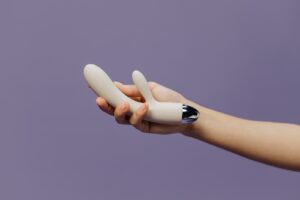Having an IUD is a great way to protect yourself from unwanted pregnancy. It also provides peace of mind that you are protected from sexually transmitted diseases. However, some people are worried about feeling their IUD strings during sex. The good news is that your IUD should not feel uncomfortable.
IUDs are inserted into the uterus
IUDs are one of the best forms of birth control available, but they can be uncomfortable for some people during sex. If you or your partner can feel the strings with your penis, talk to your nurse or doctor about it. They can trim the string so it doesn’t stick out as much, or they may be able to remove it altogether. They can also check the IUD strings to make sure they’re in the right place.
IUD strings are typically a few inches long and hang from the uterus and cervix into the top of the vagina. A person should be able to feel them, but they shouldn’t pull on them because this could move the IUD out of place. It is common to be able to feel the IUD strings as the person becomes more aroused, but the IUDs should not interfere with sex.
It only takes a few minutes to have an IUD removed. During the procedure, the healthcare provider will use a metal tool called a speculum to open the vagina. They will then slide the arms of the IUD out. This process is less painful than a gynecological exam, and you can take ibuprofen to reduce any discomfort. Once the IUD is out, it will be able to provide contraception for 3-10 years.
They’re not inserted into the vaginal canal
Whether you have a copper IUD, which prevents pregnancy by releasing copper, or a hormonal IUD that prevents pregnancy by releasing estrogen, the device is “tucked away inside your uterus,” meaning it’s not in the penetration zone. While you and your partner might feel the strings of the IUD as things get hot, it won’t hurt them or affect sex in any way.
While it’s unlikely, sex can cause your IUD to shift, which can lead to complications like perforation or expulsion of the device. If you’re worried, make an appointment with your doctor or nurse to check the IUD’s position.
First, wash your hands and sit or squat down to put one finger in your vagina. Locate the cervix, which is hard and rubbery like the tip of your nose, then feel for the IUD strings. They’re long and thin, and feel similar to fishing line.
The medical professional who inserted your IUD should teach you how to check your strings regularly to make sure the device is still in place. A complication of the IUD is displacement, which can cause spotting between periods and lower abdominal pain that feels like a cramp. This is more likely to happen soon after insertion, but it can also happen later on. You’ll know if the IUD has shifted because it will feel differently when you check the strings.
They’re not inserted into the penis
IUDs are small pieces of medical-grade plastic that sit in your uterus. A doctor or nurse inserts it into the uterus through the vagina and cervix. It has arms that reach down inside the uterus and strings that hang through your cervix and into your vagina. You and your sexual partner can feel the strings during penetrative sex, but they shouldn’t cause either of you pain or discomfort.
You can also ask your doctor to trim the strings if they bother you. A medical professional can do this quickly and easily. If you have an IUD, it’s important to check the strings periodically to make sure they are still in place. The medical professional who inserted your IUD should teach you how to feel for the strings.
If you have an IUD and you can’t feel the strings, it could mean that it has migrated. This can happen for a variety of reasons, such as sex toy use or changing hormone levels. It’s important to see a doctor immediately if you think your IUD has moved, as this puts you at risk for pregnancy and can increase your chances of ectopic pregnancy.
There’s a very low chance that your IUD will shift out of position, but it is possible. You should always use backup birth control methods, such as condoms, until you see a doctor to check the status of your IUD.
They’re not inserted into the cervix
The IUD has a fine nylon string attached to it that comes out through the cervix (opening to the uterus/womb). This string cannot be seen and does not hang out of the vagina. You can check the strings to make sure your IUD is still in place by feeling high up inside of your vagina with your finger, but don’t pull on them. It’s a good idea to do this at least once every month. If the strings feel shorter or longer than usual, your IUD may have shifted.
Some people experience pain during sex with an IUD, but this is usually because of pelvic inflammatory disease (PID). In some cases, PID can cause sex discomfort. In these cases, over-the-counter ibuprofen can help reduce this pain.
In most cases, IUDs are very difficult to dislodge. They can be inserted in the same way as other types of birth control, but it’s important to talk to your healthcare provider about any concerns you have. Some women report that IUDs make sex more pleasurable, but this can be a personal choice. It’s a great option for women who want an easy, long-term method of birth control. It’s also a popular option for women who don’t want to deal with the hassle of changing birth control regularly. The best part about it is that it’s very cost-effective and often covered by insurance or Medicaid.
See Also:






